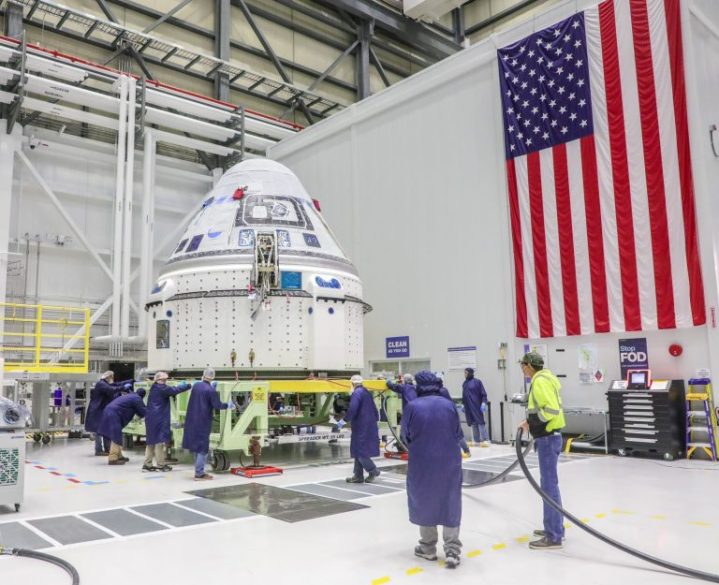NASA has announced it plans to launch the first crewed test flight of the Boeing Starliner capsule this April. The spacecraft has been through a troubled development and testing process but aims to become a second U.S.-based crew transport vehicle along with the SpaceX Crew Dragon.

The launch of the first crewed flight of the troubled Boeing Starliner is scheduled for April this year, in the middle to late period of the month. The mission, named the Crew Flight Test (CFT), is the final test before the Starliner can be put into regular use ferrying crew from Earth to the International Space Station (ISS) and back.
The CFT launch will take place from Space Launch Complex-41 at Cape Canaveral Space Force Station in Florida, using a United Launch Alliance Atlas V rocket. Two NASA astronauts will travel on the flight, Barry “Butch” Wilmore and Suni Williams, in an eight-day mission that will travel to the ISS, dock there, then return to Earth.
This will be the third orbital test flight of the Starliner, following two previous uncrewed flights in 2019 and 2022. The first of these flights, named OFT-1, failed to reach the International Space Station as planned and subsequent investigation found a variety of problems with the capsule. The second orbital flight OFT-2 was more successful with only a small issue with the process of docking with the ISS.
In a press conference, NASA official Steve Stitch said that NASA and Boeing were looking forward to the launch with around 80% of the preparation work already done.
Regarding the previous issue the Starliner had with a value that failed in the high moisture conditions of Florida, NASA said that the components in the Starliner had been adapted to protect against the reoccurrence of the issue and it was confident that the solution would hold.
Another way in which the flight will be protected against humidity is to only add fuel to the vehicle within 60 days of the launch, preventing the fuel from corroding any valves. “We are much more confident today with the mitigation that we’ve put in place with the purge systems and the ceiling of the connectors so that we don’t get that kind of moisture intrusion into the valve, but we still have that 60-day guideline,” said Mark Nappi, vice president and program manager for Starliner at Boeing.


